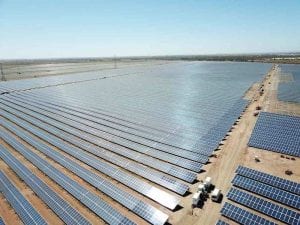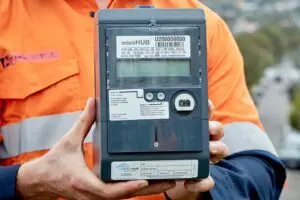The transition from fossil fuels to renewables and storage is not just about making sure there is enough electricity supply to meet demand when it is needed: It’s also about ensuring essential network services that stop the grid falling apart in the case of a major event.
Some of these services are broadly known, if not so well understood:: They include such things a frequency control, inertia and system strength, basically describing the ability of the grid to withstand a major disruption such as a failed coal plant or a downed transmission line.
These services have traditionally been provided by the coal, gas and other synchronous machines that have historically delivered all of the power.
But as these fade from the market, supplanted by cheaper renewables and storage, the question remains about who will provide these essential services, and who should be paid for it.
In reality, it’s a critical moment for the green energy transition. Do regulators design a market that favours traditional, synchronous technology and rewards those machines and effectively underwrite their continued operation?
Or, do regulators design a whole new market that recognises the ability of new, inverter based technologies that can provide exactly the same service, but in a way that is as different to traditional means as digital telecoms technology is to analogue.
The Australian Energy Market Commission is wrestling with this problem right now as it seeks to design new markets that can ensure there is enough inertia in the grid as the traditional fossil fuels exit the market.
The decision is further complicated by the fact that a long overdue environmental imperative will be inserted into the market objective, which obliges rule makers and regulators to find clean alternatives to dirty grid investments, be they generators, transmission lines or other infrastructure.
The second complication is that the new inverter-based technology – known as grid forming inverters – is only now emerging. Several batteries – Wallgrove, Hornsdale, and the new Torrens Island batteries – will feature this technology, but getting the agreed operating rules has been a long process.
Fossil fuel companies are naturally keen that they should now start to get paid to deliver services that have traditionally delivered for free – it’s one of the few opportunities they have to lock in revenues that could extend the life of their assets.
The clean energy industry is, of course, dead against that, and is urging the AEMC to pursue one of its stated options – the creation of what is known as “rate of change of frequency” services – that will favour new, zero emissions technologies.
This is an important consideration, because it is the rate of change of frequency that is considered one of the big risks for grid security. If frequency changes too quickly, it can be hard to arrest. And if it is, the frequency can easily overshoot the other way, particularly with slow moving fossil fuel machines.
This creates a massive opportunity for battery storage, which can react in milliseconds and quickly change course. Big batteries have already intervened usefully in slowing the rate of change of frequency, but have done it for free.
But the design of a credible market for RoCoF services needs to take into account the rapidly emerging capabilities of the inverters themselves. And that is presenting a key challenge for the rule makers.
The Clean Energy Council has declared its support for a RoCoF service than a vanilla inertia services market because it is more likely to support investment in new zero carbon sources of system stability.
“While existing synchronous assets will play some role in maintaining system frequency and stability through the transition, relying on these assets is not a sustainable solution.” its says in its submission.
“A RoCoF service must therefore be designed to actively favour zero carbon sources of frequency control and system stability. This is also the only sustainable way to maintain power system frequency stability and deliver efficient energy prices for consumers.”
It also points to the National Energy Objective, which is about to include the environmental objective agreed by state energy ministers last year.
“Synchronous thermal assets are rapidly exiting the system, and it is likely that moves to seasonal unit operation or even mothballing will increasingly become the norm,” the CEC submission says.
“In this environment, there is a real risk that reliance on synchronous assets for system stability will result in both higher costs for consumers – given the greater opportunity for remaining thermal synchronous assets to exercise transient market power – as well as reduced system security.
“Such an outcome would be clearly inconsistent with the emissions reduction limb of the NEO, as well as the general NEO requirements for efficient prices and system security.”
It says new markets should be designed to deliberately favour investments in zero carbon technologies for the provision of energy and system security.
“While historically this may have been interpreted as contradicting the so called ‘technological neutrality’ market design principles of the NER, in practice it is the only way to support the investment needed to meet the long term interests of consumers.”
But moving to new markets also requires a change of definitions. The CEC points to one – that inertia is provided by “electromagnetically coupled” assets that would exclude electronically connected assets – such as batteries with grid forming inverters.
“Examples such as the Wallgrove and Hornsdale batteries illustrate the ways in which IBR assets can provide an automatic and instantaneous inertial response that is more or less indistinguishable from the inertial response of a synchronous asset,” the CEC says.
One issue is the best means to straddle the two diverging technologies and the delays in developing technical frameworks to create a market that can look to the future.
The CEC is suggesting a collection of hybrid solutions, including excluding fossil fuel assets from earning revenue in such a market, forcing them to be price takers rather than price setters, or splitting the market into zero carbon and “other.” The AEMC is continuing its consultations.










